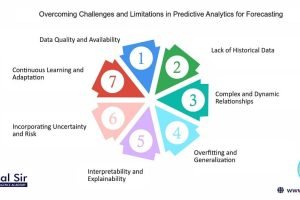
Types of Data Analytics: Descriptive, Diagnostic, Predictive, and Prescriptive
Introduction
Data analytics helps businesses make smarter decisions by turning raw data into actionable insights. But not all analytics are the same—there are four main types:
Descriptive Analytics – What happened?
Diagnostic Analytics – Why did it happen?
Predictive Analytics – What could happen?
Prescriptive Analytics – What should we do?
Each type serves a different purpose, from summarizing past events to recommending future actions. Let’s break them down with real-world examples.
1. Descriptive Analytics: What Happened?
Descriptive analytics summarizes historical data to identify trends and patterns.
Key Features:
✔️ Analyzes past performance
✔️ Uses dashboards and reports (e.g., sales trends, website traffic)
✔️ Common tools: Excel, Google Analytics, Tableau
Example:
A retail store analyzes last month’s sales data to see which products sold the most.
2. Diagnostic Analytics: Why Did It Happen?
Diagnostic analytics digs deeper to find the root cause of past events.
Key Features:
✔️ Investigates anomalies (e.g., sudden drop in sales)
✔️ Uses drill-down and data mining techniques
✔️ Common tools: SQL, Python, R
Example:
An e-commerce company discovers that a website crash led to a 30% drop in sales.
3. Predictive Analytics: What Could Happen?
Predictive analytics forecasts future trends using historical data and machine learning.
Key Features:
✔️ Uses statistical models & AI
✔️ Helps in risk assessment and forecasting
✔️ Common tools: Python (Scikit-learn), TensorFlow, SAS
Example:
A bank predicts loan default risks based on a customer’s credit history.
4. Prescriptive Analytics: What Should We Do?
Prescriptive analytics suggests the best course of action using AI and optimization techniques.
Key Features:
✔️ Recommends data-driven decisions
✔️ Uses simulation and automation
✔️ Common tools: IBM Decision Optimization, Google’s OR-Tools
Example:
A logistics company uses AI to optimize delivery routes for fuel efficiency.
Comparison Table: Types of Data Analytics
| Type | Question Answered | Tools Used | Example |
|---|---|---|---|
| Descriptive | What happened? | Excel, Tableau | Monthly sales report |
| Diagnostic | Why did it happen? | SQL, Python | Finding reasons for sales drop |
| Predictive | What could happen? | Machine Learning | Forecasting stock prices |
| Prescriptive | What should we do? | AI, Optimization tools | Recommending business strategies |
How Businesses Use These Analytics Types
- Marketing: Predictive analytics for customer segmentation.
- Healthcare: Prescriptive analytics for treatment plans.
- Finance: Diagnostic analytics for fraud detection.
- Retail: Descriptive analytics for inventory management.
Which Type Should You Use?
- Need a summary of past data? → Descriptive
- Want to find the cause of a problem? → Diagnostic
- Looking to predict future trends? → Predictive
- Need AI-driven recommendations? → Prescriptive
Conclusion
Understanding the four types of data analytics helps businesses make better decisions—from analyzing past trends to predicting future outcomes.
Which type do you use the most? Let us know in the comments!




